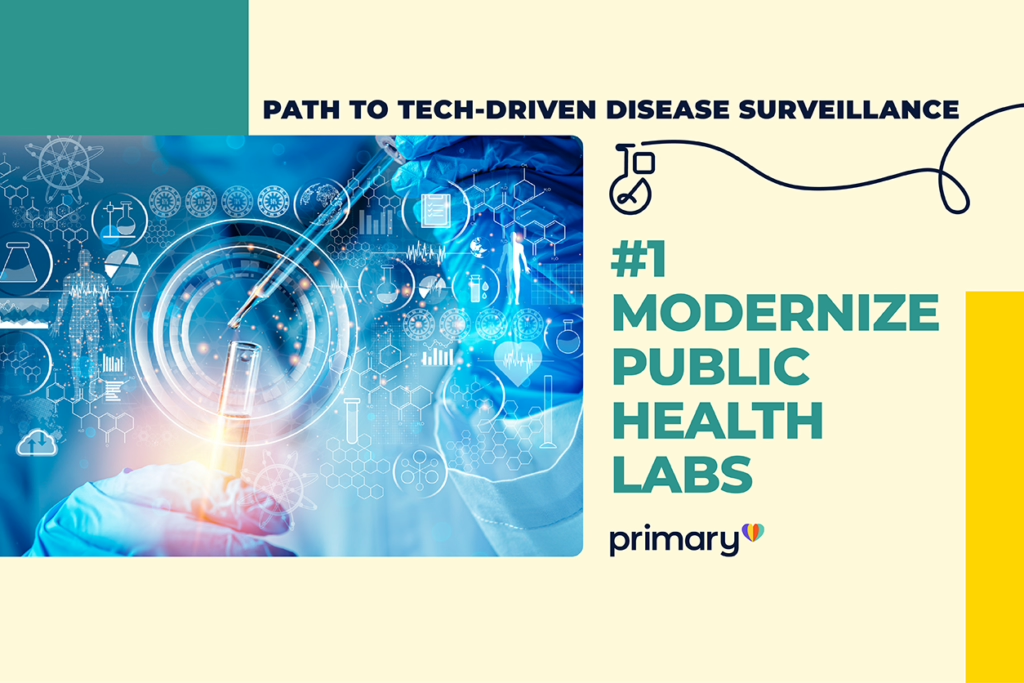
Investing in data modernization will future-proof our public health laboratories, revolutionize disease surveillance, and safeguard global health.
Note: This is the first in our series on using public health tech to revolutionize disease surveillance and response.
The global response to H5N1 – marked by increasing human cases, identification of a new strain of bird flu, H5N9, and the virus’s evolving transmissibility – reveals gaps in our ability to monitor and respond to emerging threats. The situation underscores an urgent need for public health laboratories (PHLs) and public health agencies to evolve into data-driven hubs of disease tracking and emergency preparedness.
Investments in stand-alone systems lead to redundancy, duplicative work, and higher costs, making reuse of existing technologies critical. The integration of advanced data interoperability frameworks and technology-driven workflows will allow laboratories to meet current challenges and prepare for future ones.
CDC’s Data Modernization Initiative (DMI) has a main goal – to get better, faster, actionable insights for decision-making at all levels of public health. Funded at $1 billion in 2020, this allotmentwas distributed to state, tribal, local, and territorial (STLT) public health agencies to assist STLTs in modernizing their current systems. This is a huge investment in public health to update their IT infrastructure as well as acquire human resources with specific skill sets, such as software engineers that have integration engine experience, or a data standards expert that can help lead this transformation.
However, if there is no specific guidance to STLTs on where to start, the funding used may not fully achieve DMI’s main goal. Many PHLs and public health agencies have competing priorities and data modernization is a large undertaking, making it difficult to decide what improvements they will make first.
Why Modernization Matters
Laboratories generate critical data that drives public health surveillance, clinical care, and research. However, the current patchwork of manual processes (fax machines and paper records) and inconsistent data standards hamper efficient information exchange.
Key Modernization Areas
Here are two essential steps STLTs can take toward PHL data modernization:
- Adopt Interoperable Data Systems: Interoperability enables laboratories to standardize test descriptions, reduce errors, and eliminate redundant processes, allowing these systems to talk to one another. Efforts like adopting data standards such as Logical Observation Identifiers Names and Codes (LOINC) and standardized Health Level 7 (HL7) message structures will increase efficiency across applications while decreasing the effort to exchange data across all these applications. Enhancing Electronic Test Orders and Results (ETOR) can help with uniformity across diverse systems and stakeholders.
- Enhance Automation and Reporting
Efforts such as electronic laboratory reporting (ELR) ensure rapid data exchange between laboratories and healthcare providers, facilitating real-time responses. For example, if a lab result revealed a patient had a disease mandated to be reported to public health, the laboratory would notify the department of health within that state of the test result. That health department would then contact providers to report the findings and offer clinical decision support if needed.
In this example and others, modern PHL workflows incorporating these systems can eliminate delays caused by manual practices.
Preparing for Future Threats
The path to resilience involves proactive strategies that combine innovative technologies with robust data frameworks. For example:
- Pre-Register At-Risk Populations: Create prioritized vaccine waitlists for vulnerable groups to ensure swift immunization during outbreaks.
- Incentivize Technology Adoption: Support the deployment of standards-compliant diagnostic tools and rapid testing kits through targeted funding and procurement programs.
- Expand Data Collection and Exchange: Utilize interoperable systems to integrate case-based surveillance, risk behavior monitoring, and situational awareness data.
Building Resilience for the Future
Investing in data modernization and innovative testing technologies is not just about addressing the current H5N1 threat – it’s key to future-proofing our public health systems. A coordinated effort involving public health agencies, private sector partners, and local communities is essential.
PHL data modernization is not just a response to today’s crises; it’s also an investment in safeguarding global health for generations. By implementing scalable, interoperable, and innovative solutions, we can transform how we detect, respond to, and mitigate infectious diseases.
Primary.Health is committed to powering public health tech to accelerate disease surveillance and response. Talk to us about using CONNECT, a robust, interoperable platform that streamlines healthcare data exchange across providers, labs, hospitals, and health information exchanges.
Editor’s Note: Future segments on “Using public health tech to revolutionize disease surveillance and response” will cover: lab-agnostic self-collection kits; metagenomic surveillance; economically viable rapid testing; pre-registering of vulnerable populations; and improved procurement with target product profiles (TPPs).
